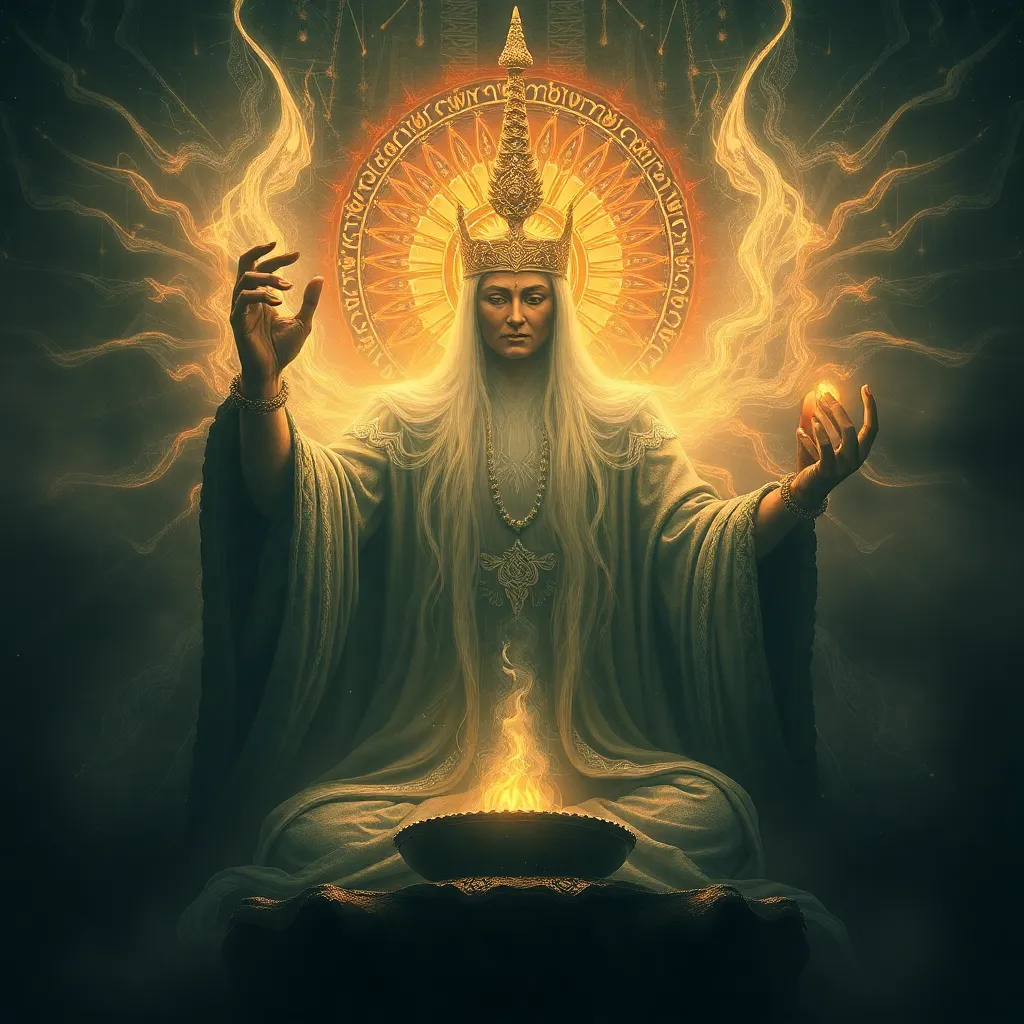Itzamná: The Divine Teacher of the Arts and Crafts
I. Introduction
In the rich tapestry of Mesoamerican mythology, Itzamná stands out as a multifaceted deity revered for his wisdom and mastery over various arts and crafts. Often depicted as a god of creation and knowledge, Itzamná embodies the essence of artistic expression and craftsmanship that has shaped the cultural identity of the Maya civilization. This article delves into the historical, cultural, and artistic significance of Itzamná, exploring his attributes and the profound impact of his teachings on Mesoamerican arts.
II. Historical Context of Itzamná
The origins of Itzamná can be traced back to the formative periods of the Maya civilization, where he emerged as a central figure in their religious practices. As one of the principal deities in the Maya pantheon, he was often associated with the sky, wisdom, and creation. Itzamná’s cultural significance is underscored by his involvement in various myths that explain the nature of the universe and the origins of humanity.
As the god of arts and crafts, Itzamná played a crucial role in the spiritual and daily lives of the Maya. His worship evolved over centuries, with rituals and ceremonies that highlighted his importance. The cult of Itzamná adapted to changing social and political landscapes, ensuring his enduring relevance in Maya spirituality.
III. The Attributes of Itzamná
Itzamná is often depicted with various symbols and iconography that signify his divine attributes. Common representations include:
- Serpent imagery: Symbolizing wisdom and the connection between the earthly and celestial realms.
- Books and scrolls: Representing knowledge, learning, and the importance of oral tradition.
- Artistic tools: Such as paintbrushes and sculpting instruments, highlighting his role as a patron of the arts.
In addition to his artistic connections, Itzamná is also associated with attributes such as:
- Wisdom: As a teacher and guide, imparting knowledge to humanity.
- Creativity: Inspiring artists and craftsmen to produce works of beauty and significance.
- Craftsmanship: Encouraging skill and precision in various forms of art.
Itzamná’s connection to other deities, such as Kukulkan and the Moon goddess, further enriches his narrative within Maya mythology, showcasing a complex web of relationships among the gods.
IV. Itzamná as the Patron of Various Arts
As the divine teacher of arts and crafts, Itzamná’s influence permeated various artistic domains:
- Visual Arts: Itzamná played a pivotal role in the development of painting and sculpture in Maya culture. His teachings inspired artists to create intricate murals and carvings that depicted mythological tales and historical events.
- Textile Crafts: The art of weaving, essential to Maya society, was believed to be guided by Itzamná. His influence can be seen in the vibrant colors and complex patterns of traditional Maya textiles.
- Pottery: Itzamná’s teachings extended to pottery, where artisans crafted functional and decorative pieces that reflected their cosmological beliefs.
- Music and Dance: Itzamná’s connection to performance arts is evident in the rituals that incorporated music and dance, serving as a form of worship and a means to connect with the divine.
V. Itzamná’s Teachings and Their Impact
Legends surrounding Itzamná’s teachings highlight his role as a mentor to humanity. Through stories passed down through generations, Itzamná is depicted as imparting knowledge about agriculture, the arts, and spiritual practices. These teachings were preserved through oral tradition, ensuring that the wisdom of Itzamná continued to influence subsequent generations.
The significance of these teachings is evident in contemporary Mesoamerican art and culture, where echoes of Itzamná’s influence can be seen in the revival of traditional practices and artistic expressions. Artists today often draw inspiration from ancient techniques and themes, keeping the spirit of Itzamná alive.
VI. Rituals and Ceremonies Dedicated to Itzamná
Rituals honoring Itzamná were integral to Maya worship, reflecting the deep reverence for this divine teacher. These ceremonies often involved:
- Offerings: Artisans would present their creations as offerings to Itzamná, seeking his blessings for creativity and skill.
- Prayers and chants: Recited by priests and community leaders, invoking Itzamná’s guidance and wisdom.
- Festivals: Celebrations that showcased local arts, reinforcing the community’s cultural identity and connection to Itzamná.
In modern times, some traditional practices continue to honor Itzamná, demonstrating the lasting impact of his legacy in contemporary Mesoamerican spirituality.
VII. Itzamná in Contemporary Culture
Today, Itzamná is represented in various forms of modern media and art, from literature to visual arts. Artists and creators often reference Itzamná’s teachings and attributes, blending ancient wisdom with contemporary expressions.
The revival of traditional crafts has also seen a resurgence, with artisans drawing inspiration from Itzamná’s legacy. Educational initiatives that focus on Mesoamerican arts and crafts often highlight Itzamná as a central figure, encouraging a renewed appreciation for these cultural practices.
VIII. Conclusion
In summary, Itzamná holds a significant place in Mesoamerican mythology as the divine teacher of arts and crafts. His influence on various forms of artistic expression, coupled with the enduring legacy of his teachings, continues to resonate in today’s society. As we reflect on the cultural contributions of Itzamná, it becomes clear that appreciating and preserving Mesoamerican artistic traditions is essential for honoring the past and enriching the future.
